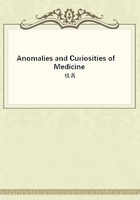
第46章
The following extract from the University Medical Magazine of Philadelphia illustrates the after-effects of abdominal hysteropasy on subsequent pregnancies:--"Fraipont (Annales de la Societe Medico-Chirurgicale de Liege, 1894) reports four cases where pregnancy and labor were practically normal, though the uterus of each patient had been fixed to the abdominal walls. In two of the cases the hysteropexy had been performed over five years before the pregnancy occurred, and, although the bands of adhesion between the fundus and the parietes must have become very tough after so long a period, no special difficulty was encountered. In two of the cases the forceps was used, but not on account of uterine inertia; the fetal head was voluminous, and in one of the two cases internal rotation was delayed. The placenta was always expelled easily, and no serious postpartum hemorrhage occurred. Fraipont observed the progress of pregnancy in several of these cases. The uterus does not increase specially in its posterior part, but quite uniformly, so that, as might be expected, the fundus gradually detaches itself from the abdominal wall. Even if the adhesions were not broken down they would of necessity be so stretched as to be useless for their original purpose after delivery. Bands of adhesion could not share in the process of involution. As, however, the uterus undergoes perfect involution, it is restored to its original condition before the onset of the disease which rendered hysteropexy necessary."The coexistence of an extensive tumor of the uterus with pregnancy does not necessarily mean that the product of conception will be blighted. Brochin speaks of a case in which pregnancy was complicated with fibroma of the uterus, the accouchement being natural at term. Byrne mentions a case of pregnancy complicated with a large uterine fibroid. Delivery was effected at full term, and although there was considerable hemorrhage the mother recovered. Ingleby describes a case of fibrous tumor of the uterus terminating fatally, but not until three weeks after delivery. Lusk mentions a case of pregnancy with fibrocystic tumor of the uterus occluding the cervix. At the appearance of symptoms of eclampsia version was performed and delivery effected, followed by postpartum hemorrhage. The mother died from peritonitis and collapse, but the stillborn child was resuscitated. Roberts reports a case of pregnancy associated with a large fibrocellular polypus of the uterus. A living child was delivered at the seventh month, ecrasement was performed, and the mother recovered.
Von Quast speaks of a fibromyoma removed five days after labor.
Gervis reports the removal of a large polypus of the uterus on the fifth day after confinement. Davis describes the spontaneous expulsion of a large polypus two days after the delivery of a fine, healthy, male child. Deason mentions a case of anomalous tumor of the uterus during pregnancy which was expelled after the birth of the child; and Daly also speaks of a tumor expelled from the uterus after delivery. Cathell speaks of a case of pregnancy complicated with both uterine fibroids and measles. Other cases of a similar nature to the foregoing are too numerous to mention.
Figure 13, taken from Spiegelberg, shows a large fibroid blocking the pelvis of a pregnant woman.
There are several peculiar accidents and anomalies not previously mentioned which deserve a place here, viz., those of the membranes surrounding the fetus. Brown speaks of protrusion of the membranes from the vulva several weeks before confinement.
Davies relates an instance in which there was a copious watery discharge during pregnancy not followed by labor. There is a case mentioned in which an accident and an inopportune dose of ergot at the fifth month of pregnancy were followed by rupture of the amniotic sac, and subsequently a constant flow of watery fluid continued for the remaining three months of pregnancy. The fetus died at the time, and was born in an advanced state of putrefaction, by version, three months after the accident. The mother died five months after of carcinoma of the uterus.
Montgomery reports the instance of a woman who menstruated last on May 22, 1850, and quickened on September 26th, and continued well until the 11th of November. At this time, as she was retiring, she became conscious that there was a watery discharge from the vagina, which proved to be liquor amnii. Her health was good. The discharge continued, her size increased, and the motions of the child continued active. On the 18th of January a full-sized eight months' child was born. It had an incessant, wailing, low cry, always of evil augury in new-born infants. The child died shortly after. The daily discharge was about 5 ounces, and had lasted sixty-eight days, making 21 pints in all. The same accident of rupture of the membranes long before labor happened to the patient's mother.